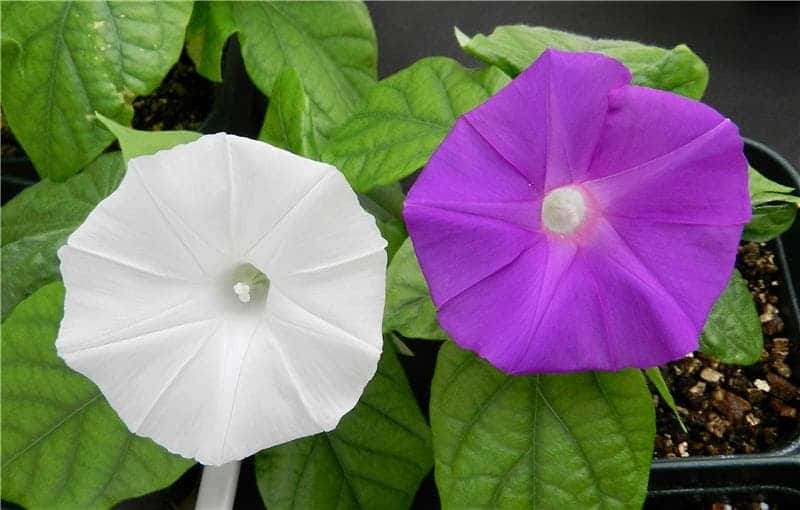With the help of the mighty CRISPR gene editing tool, scientists changed the flower color of a traditional Japanese garden plant from violet to white. The alteration was so precise only a single gene disruption was enough to introduce this effect. Such experiments highlight the tremendous potential of manipulating genes in horticultural plants.
The Japanese morning glory (Ipomoea nil or Pharbitis nil) has been a cherished flower since days of old. You can see it everywhere in Japan during summers and ever since the late Edo era (early 19th century), breeders took pleasure in creating diverse new leaves and flowers. The story of the Japanese morning glory started much earlier though, in the 8th century AD, with the introduction of wild blue-flowered plants into Japan from China.
Now, a collaborative team comprised of researchers at the University of Tsukuba, the National Agriculture and Food Research Organization (NARO) and Yokohama City University demonstrated how to alter the morning glory’s flowers in one elegant blow.
They targetted a single gene called DFR-B which encodes the anthocyanin biosynthesis enzyme responsible for the coloring for the plant’s stems, leaves, and flowers. Right next to this gene lie two closely related genes (DFR-A and DRF-C) which made it challenging to accurately target DFR-B without touching its neighbors.
Luckily, CRISPR, sometimes referred to as a molecular scissor, was up to the challenge. CRISPR/Cas9, short for Clustered Regularly Interspaced Short Palindromic Repeats is an immensely powerful tool that easily allows scientists to study and alter the genes of organisms. It’s composed of two molecules that can alter a DNA sequence while the CAS9 enzyme, guided by gRNA, cuts the DNA strand in a precise location. This way DNA can be added or removed with laser precision.
Disrupting the DFR-B deactivates the encoded enzyme, resulting in the absence of the color pigment anthocyanin. The Japanese researchers inserted the CRISPR/Cas9 system into tissue-cultured embryos of Japanese morning glory plants with the help of the DNA-transferring properties of the Rhizobium plant bacterium.
Around 75 percent of the transgenic plants had green stems and white flowers instead of the characteristic violet. Subsequent genetic sequencing confirmed that the DNA target sequence was altered, all while DFR-A and DFR-C remained unaltered.
An intriguing twist occurred when the scientists examined the inheritance of the CRISPR-induced mutations in next generation plants. Among these plants, there were some that presented no sign of introduced foreign DNA. Right now, next-generation plants are considered transgenic based on how they were made (process-based definition) while non-transgenic are define by the presence of foreign DNA in the final product. This may raise an interesting debate around the regulation of GMOs.
In any event, it’s thrilling to hear about such developments. The first white-flowered Japanese morning glory was painted in Japan in 1631. Now, science is capable of doing centuries of work on nature’s part in a fraction of the time.
Scientific reference: Kenta Watanabe, Anna Kobayashi, Masaki Endo, Kimiyo Sage-Ono, Seiichi Toki, Michiyuki Ono, CRISPR/Cas9-mediated mutagenesis of the dihydroflavonol-4-reductase-B (DFR-B) locus in the Japanese morning glory Ipomoea (Pharbitis) nil, Scientific Reports, Doi:10.1038/s41598-017-10715-1










